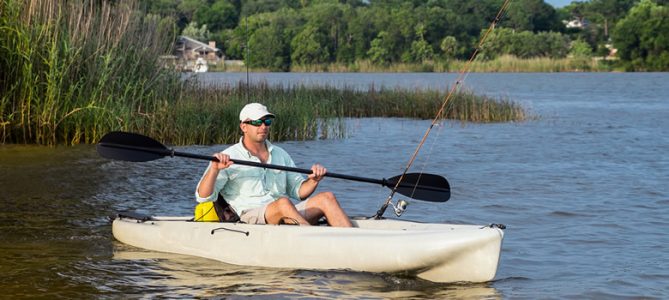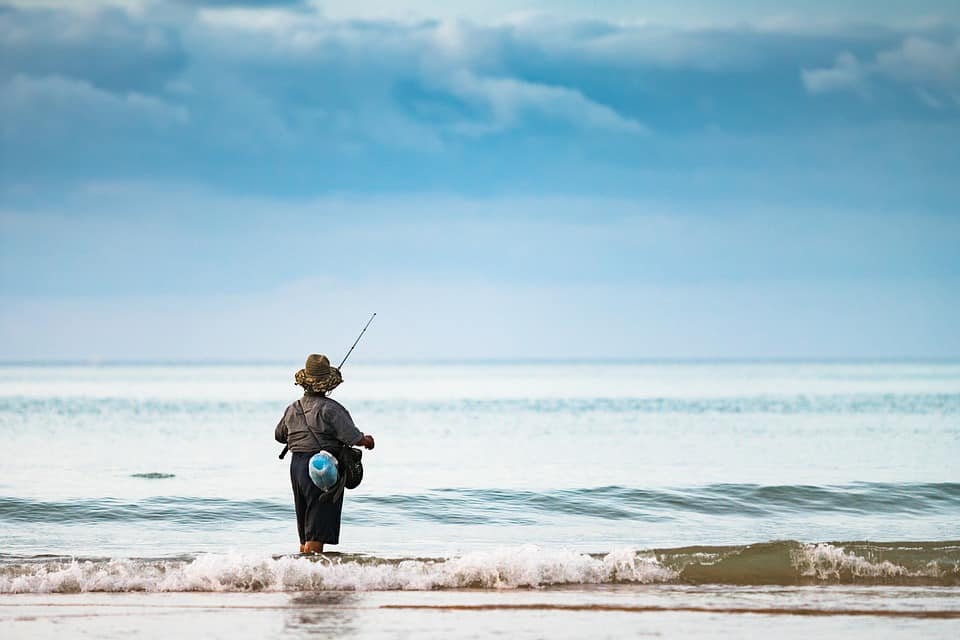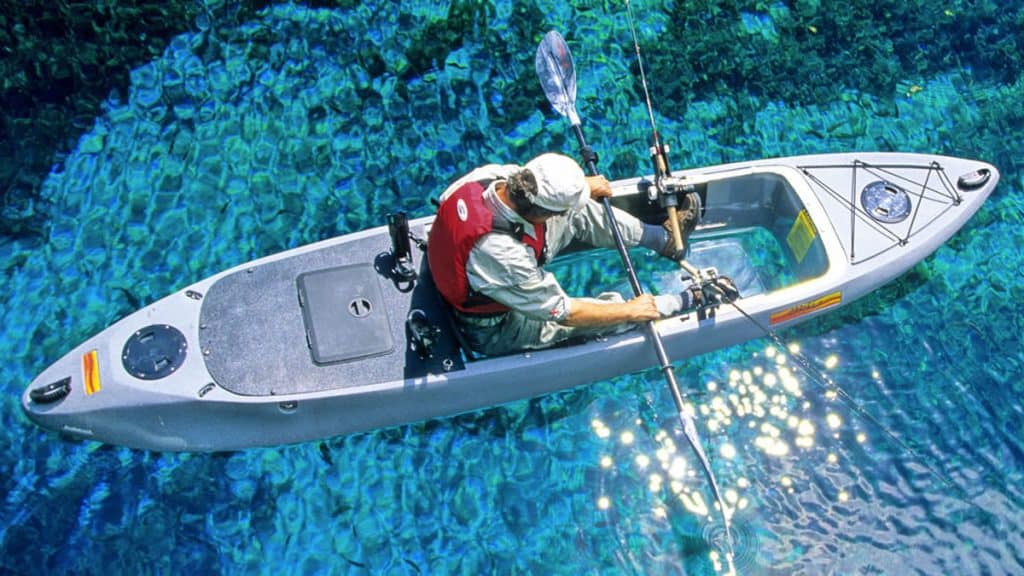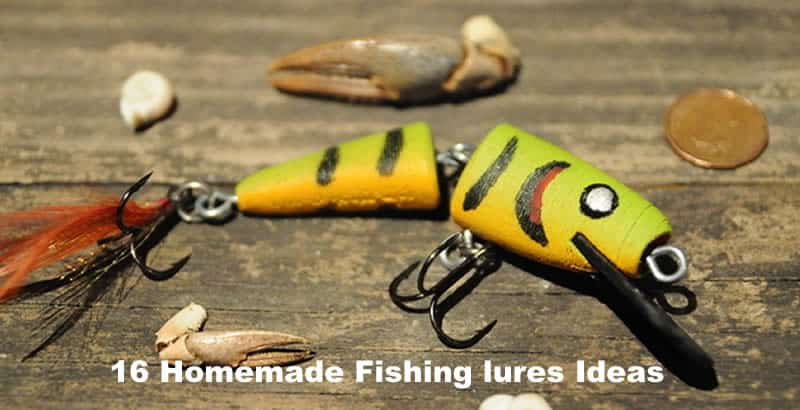If you buy via a link on this page, we may receive a commission, at no extra cost to you.Learn more
People have long used kayaks to travel the water, fish, hunt, or the three of the same type. While the general structure is the same, ancient kayaks don’t look anything like modern-day models.
First, the material has changed from wood to lighter plastics. Yes, you still might find some wooden kayaks in the market. But they are heavy, expensive, and uncommon.

The second thing that has changed is the design. Modern-day kayaks have smoother lines and compact sizes. But, thanks to the growing popularity of these crafts, they now have a target-specific build.
You must be asking yourself, what is a target-specific built? These are crafts that have a particular design that makes them more suitable for certain activities.
Take fishing kayaks as an example. These are tailor-made crafts for fishing! And they have a set of features that makes them stand out from the rest of regular kayaks both in performance and looks.
So, What’s the difference between a fishing kayak and a regular kayak? Well, there are many differences between them like:
- The dimensions- Fishing kayaks are wider than most kayaks.
- Flat hull- For increased stability.
- More capacity and more room to store it- Fishing kayaks can haul more gear than any other model.
- Sit-on-top deck design- More room to move and to place your gear.
- Propulsion system- You can choose between paddle, pedals, or trolling engine.
- Comfortable seat- Adjustable seat for long waits.
- Colors- Greys and camo designs to blend better with the surroundings.
- Extras- Fishing kayaks have everything you need to make the most of your trip.
So, to thoroughly explain this topic, we will describe in detail the main differences between fishing and regular kayak.
The Kayak’s Dimensions
We choose to talk about the dimensions first because: It directly affects performance and is the first thing that you see when buying a new fishing kayak.
We will break this section into two: The length and width.
Length
The length of the Yak affects its speed and tracking. Longer kayaks, such as touring or racing models, are built for speed and track with ease. Therefore, they are most suitable for long trips.
Fishing kayaks are, on average, 10 to 12 feet long. So, they sit on the right in the middle of the length spectrum. The reason is simple; you don’t buy a fishing kayak to go at insane speeds or to paddle all day long. Plus, a 10 to 12 feet long fishing kayak is maneuverable enough to make your way through narrow side channels.
Width
You might notice that fishing kayaks have a broader hull than the regular models. Most fishing kayaks are 30 inches long at the widest point (beam). There are two reasons for this. The first, and more obvious, is carrying capacity. Fishing kayaks should be able to handle your weight, the weight of your gear, and, of course, your massive, award-winning fish without sinking. A general rule of thumb indicates that wider kayaks have a better weight distribution. As a result, they can carry more weight.
The second reason is stability. Fishing kayaks need to be stable enough to get in and out, stand up, and fight the fish without too much trouble. But this comes with a price. Like we said before, fishing kayaks are slow and harder to paddle. But then again, you don’t purchase such a Yak to race or engage in long-distance trips.
The Hull
The hull design has a tremendous impact on kayak performance. For instance, both stability and maneuverability depend on the hull shape. Most fishing kayaks have a flat hull with a multi chin construction. The flat hull grants superb primary stability, while the multi chin side enhances secondary stability.
Most other yaks have either flat or rounded bottoms except racing kayaks, which have an aggressive V-shaped hull for speed.
Storage
Most regular kayaks have up to two hatches to store valuable things like keys or wallets. Even though some regular kayaks might have a decent carrying capacity, it is impossible to get your gear while you are in the water. Therefore, you have to wait until you get to the shore to get your equipment.
In the case of fishing kayaks, they usually have more than two dedicated storage compartments as well as cargo areas big enough to fit a cooler. Additionally, fishing Yaks have the traditional shock cord deck rigging to keep essential gear within reach. Some high-end models even have slots to carry life bait and inbuilt coolers! And, if that isn’t enough, you will be able to access your gear while you are on the water.
As you can see, there is more room to store your gear in a fishing kayak than in any other model.
Carrying Capacity
Fishing kayaks typically have a higher carrying capacity than regular models. As we said before, you will be bringing a lot of gear, some beverages, snacks, yourself (of course), and any fish you manage to catch. Thus, the fishing kayak should be able to handle the combined weight of all the elements and more, if possible.
Only recreational kayaks have a comparable carrying capacity. Still, it is typically lower than fishing Yaks. There is no need for a regular kayak to have a huge capacity since you will be using it for the occasional trip to the local lake.
The Deck
Most fishing kayaks you find in the market are sit-on-top models (SOTs). Therefore, they have an open deck, and, as the name suggests, the seat is on top of the Yak. Therefore, you sit higher and have more room to spread your legs and place your gear. You can even stand up and move a little when using SOTs fishing kayaks. Additionally, SOTs can carry more weight and distribute it better, which is crucial when fishing.
The downside of sit-on-top fishing kayaks is that they are typically slower, and it is harder to move the craft. But then again, speed is not the goal here. Fishing Yaks should be able to carry a lot of weight and provide a stable platform for you to fish from, nothing more.
Another problem with SOTs is that all your body is exposed. Hence, you are more likely to get soaked with water. But hey! Fish from a PC or console if you don’t wish to get wet.
In contrast, most regular kayaks are of the sit-inside type (SIKs). In this case, the seat is beneath the deck, which restricts your movement. As you might expect, standing up is out of the question as well. However, sit-inside kayaks are more maneuverable, stable, and it is easy to paddle.
Although uncommon, there are some sit-inside fishing kayaks. But they are usually outperformed by their SOTs counterparts.
Propulsion Systems
A double-edged paddle is a standard means of propulsion in any kayak. But some high-end fishing kayaks offer the possibility of attaching a trolling engine or a pedal propulsion system.
Such arrangements are extremely convenient. For instance, your lower body is more powerful than the upper section. Thus, you can go faster and further. Plus, you can move the kayak without putting your rod away, which is extremely useful when fighting a big fish.
Additionally, there are fewer splashes and sounds with a pedal propulsion system. As a result, you can easily approach the fish bank without spooking them.
The Seats
Another major difference is the seat. As soon as you lay your eyes on it, you will notice that it is like a tiny version of a racing chair; comfortable, yet useful.
Fishing kayaks seats have either an adjustable back or a fully adaptable system. Therefore, they are more comfortable than regular kayak seats.
Some high-end fishing kayaks models have fully reclining seats so you can lay down while you wait for a bite. And they usually have a breathable fabric construct. It keeps your back and bottoms cool. Plus, it dries fast.
Color
Wait, fishing kayaks have a particular color? Yes, if you look at any model, you will notice that the color isn’t too bright. Plus, they typically have some kind of camo layout. This way, the craft will blend better with the surroundings, making it harder for fish to notice your presence.
Regular kayaks typically have bright, easily recognizable colors. Not to spook fish away, but to spot the craft from afar for security purposes.
The Extras: What Makes a Good Fishing Kayak
The name doesn’t come in vain. Most fishing kayaks come fully rigged with all you might need for your fishing trip. And if you happen to need something more, you can add later on as some models allow you to customize them.
Rod Holders
Rod holders are the most important thing that any fishing kayak should have. Thus, it is one of the main differences between them and any other type of kayak available in the market.
There are two types of rod holders: Flush-mounted and adjustable. Any decent fishing kayak should have, at least, one of them.
Some high-end models feature up to 4 holders at the same time. And if that isn’t enough, you can install a couple more later on.
Regular kayaks don’t have rod holders. You could try to install them. However, we don’t recommend it because fishing kayaks have special areas where you can screw the holder without compromising its structure.
Gadget Rail
Fish finders and GPS are two tools that might come in handy when fishing. The problem is, where to put them? Some fishing kayaks come with a rail system where you can fix such tools.
You might even find some models with a fish finder or GPS-ready central console. Regular kayaks lack this feature since you aren’t supposed to use them from fishing.
Anchor Trolley
Fishing often means sitting in the same place for hours. On land, this isn’t much of a problem. But things are different once you are inside the water. Even in the calmest of all lakes, you are likely to move far away from your fishing spot.
Some fishing kayaks are anchor-ready, which means that you can purchase an anchor and fix it to your kayak. This way, you can secure your craft in one place without worrying too much about drifting away from your initial position.
Regular kayaks don’t come with such a system. They are for paddling in the water, not for sitting still.
Drink Holders
It might not be a distinguishing feature of fishing kayaks. But it is more likely to find them in such models. Drink holders are a nice addition to have around, especially while you are sitting still waiting for the fish to take the bait.
Closing Remarks
You can use any kayak in any kind of situation. For example, you can fish with a touring kayak, and travel long distances with a fishing kayak. However, either craft won’t achieve ideal performance in those situations.
Each kayak is different. Even within the same category, you will notice some differences in both design and performance. Still, this doesn’t mean that you have to purchase a different kayak for each kind of water, weather, and purpose. But you do have to think under which set of circumstances you will be using it most of the time. And make peace with the fact that the performance will be different outside such conditions.
Yes, you can purchase a recreational kayak and rig it, making it look like a fishing kayak. Still, you are quite likely to spend more money in the process. And you risk damaging the craft in the process.
In general, fishing kayaks have an average length of 10 to 12 feet, broad beam, and flat hull with a sit-on-top deck. Thus, it is fairly easy to recognize them since they look more like a plastic platform than a regular kayak.
On the other hand, regular kayaks are slimmer, have a SIK structure, and don’t have any of the extras and special features that fishing kayaks have. So, in conclusion, each craft has its purpose. It is up to you to decide which is the one that best suits your needs.




